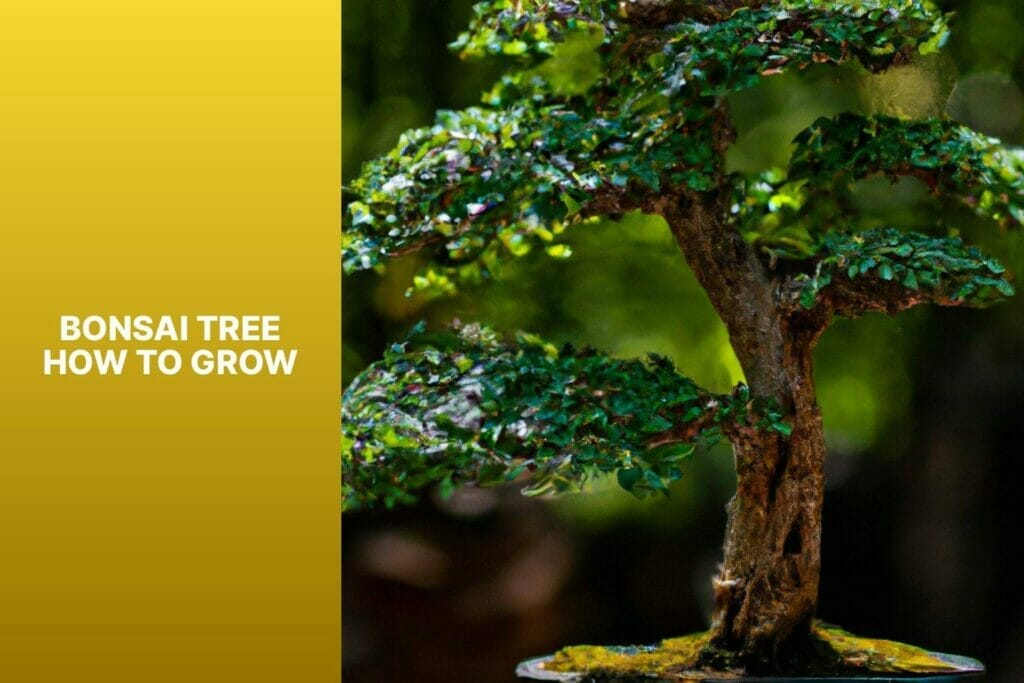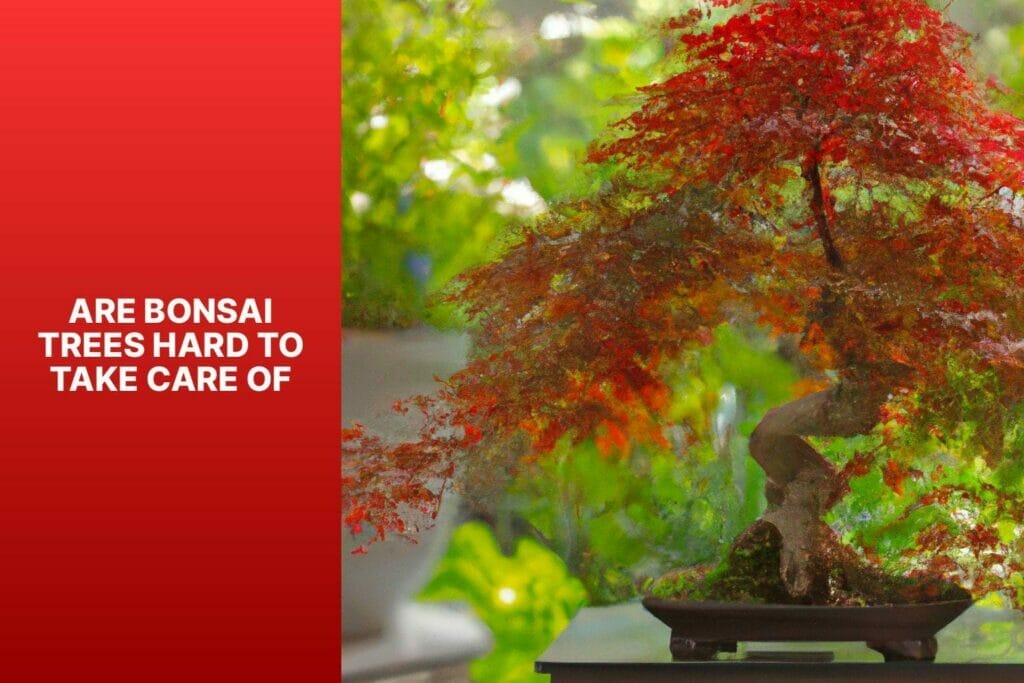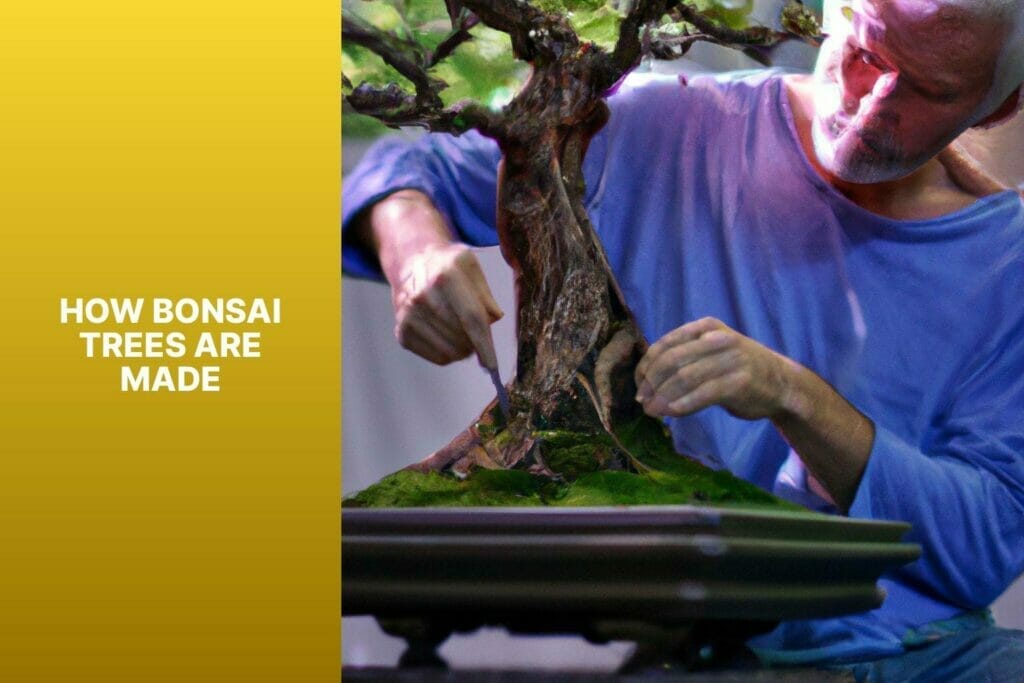Bonsai trees have captivated enthusiasts with their miniature size and artistic beauty for centuries. Growing a bonsai tree is not only a rewarding hobby but an art form that requires patience, careful cultivation, and knowledge of the tree’s specific needs. In this comprehensive guide to growing bonsai trees, we will delve into the intricate world of bonsai cultivation, providing insights and techniques to help you successfully grow and care for these remarkable plants.
Introduction to Bonsai Trees
Bonsai trees are miniature trees carefully cultivated to resemble full-size trees in a smaller form. These living works of art originated in ancient China and Japan, where they were treasured for their aesthetic value and spiritual symbolism. Today, bonsai trees are admired worldwide for their beauty, elegance, and the meditative practice of cultivating them.
Choosing the Right Bonsai Tree
Selecting the right bonsai tree is the first step in embarking on your journey. There is a wide variety of bonsai tree species, each with unique characteristics and care requirements. Understanding the different types of bonsai trees available and considering factors such as your climate, available space, and personal preferences will guide you in finding the perfect bonsai tree for your needs.
Cultivating a bonsai tree requires proper care and attention to ensure its health and vitality. Understanding bonsai tree care is crucial, as it involves providing the tree with the appropriate conditions for growth, including proper sunlight, watering, and soil composition. This section will explore the essential components for growing bonsai trees and the factors to consider to create the optimal environment for their development.
Watering and Pruning Techniques
Proper watering techniques are vital for maintaining the health and vigor of your bonsai tree. Overwatering or underwatering can have detrimental effects on the tree’s well-being. Pruning and shaping your bonsai tree are essential for maintaining its desired form and promoting healthy growth. This section will delve into the techniques for watering, pruning, and effectively shaping bonsai trees.
Repotting and Fertilizing Bonsai Trees
Repotting and fertilizing are essential aspects of bonsai tree care that ensure long-term health and vitality. Repotting helps maintain the tree’s root system and provides fresh soil and nutrients, while proper fertilization ensures optimal growth and vigorous foliage. Discover when and how to repot your bonsai tree and gain insights into fertilizing tips for its overall well-being.
Common Bonsai Tree Problems and Solutions
Like any living plant, bonsai trees can encounter various issues, including pests, diseases, and root rot. Recognizing and addressing these problems promptly is crucial for preserving the health and beauty of your bonsai tree. This section will guide you in identifying common bonsai tree problems and provide effective solutions to mitigate these issues.
Bonsai Tree Display and Styling
The artistry of Bonsai extends beyond its growth and cultivation, encompassing its display and styling. Choosing the right bonsai pot and creating an aesthetically pleasing arrangement can enhance the beauty and impact of your bonsai tree. Discover helpful tips for selecting the appropriate pot and learn about creative ways to display and style your bonsai tree to accentuate its unique qualities.
By delving into bonsai tree cultivation, you will embark on a rewarding journey that combines art, nature, and mindfulness. With the knowledge and techniques shared in this guide, you will be equipped to nurture and care for your bonsai trees, fostering their growth and witnessing their breathtaking transformation.
Key takeaway:
- Choosing the right bonsai tree is crucial: Consider the types of bonsai trees available and factors like climate and care requirements when selecting one.
- Proper care and maintenance are essential for bonsai tree growth: Understand the necessary components for growing a healthy tree and learn about watering, pruning, repotting, and fertilizing techniques.
- Addressing common bonsai tree problems: Learn how to deal with pests and diseases and prevent root rot and overwatering to cultivate bonsai trees successfully.
What is a Bonsai Tree?
A bonsai tree, also known as a “planted in a container” tree in Japanese, is an art form originating in China and popularized in Japan. It is a miniature tree meticulously cultivated and pruned to resemble a full-sized tree. Despite not being a specific tree species, bonsai trees are created through pruning, wiring, and Shaping techniques. The ultimate objective is to capture a larger tree’s natural beauty and structure in a smaller form.
Bonsai trees come in various sizes, ranging from just a few inches to several feet, depending on the species and preferred style. To ensure their thriving health, these trees require special care. Regular watering is crucial, but it is important to avoid over-watering as it can lead to root rot. Proper pruning is essential to maintain the desired shape and size of the bonsai tree. Additionally, fertilizing is necessary to provide the necessary nutrients for healthy growth.
History and Significance of Bonsai
Bonsai trees have a long and storied history, making them highly valued in Japanese culture. The art of cultivating these miniature trees originated over a thousand years ago, initially reserved for the elite and ruling classes. Bonsai trees symbolized status and represented a harmonious relationship with nature.
Beyond their aesthetic appeal, Bonsai also holds deep spiritual significance, embodying the concept of creating a smaller version of the natural world. The meticulous care required to shape and maintain a bonsai tree reflects discipline, patience, and mindfulness values.
Over time, Bonsai has gained global recognition as an esteemed art form, transcending cultural boundaries. Today, Bonsai represents beauty, tranquility, and the profound connection between humans and nature.
An extraordinary testament to Bonsai’s importance can be seen in the “Hiroshima Survivor,” a bonsai tree that miraculously survived the atomic bombing in 1945. The Yamaki family, who had cared for this tree for generations, preserved it, which still stands today in the United States. This remarkable Bonsai symbolizes resilience, hope, and the enduring power of nature.
Bonsai’s rich history and profound significance elevate it beyond a hobby or decoration. It is a living art form that continues to inspire and captivate people worldwide, offering a miniature representation of the beauty and harmony found in nature.
Choosing the Right Bonsai Tree
When it comes to growing bonsai trees, one of the first and most important decisions you need to make is choosing the right bonsai tree. This section will explore the various types of bonsai trees available and highlight key factors to consider when selecting the perfect one for your needs. Whether you’re drawn to the elegance of the Juniper bonsai or the vibrant beauty of a Flowering bonsai, we’ll provide insights to help you make an informed choice. So, let’s dive in and discover the world of bonsai trees!
Types of Bonsai Trees
When it comes to bonsai trees, there are different types to choose from based on your preference and desired style. Here are some types of bonsai trees:
1. Juniper Bonsai: This is a popular bonsai tree variety with an upright form and dense foliage.
2. Maple Bonsai: Maple trees have beautiful leaf colors, making them a great choice for bonsai enthusiasts. They can be styled in upright or cascading forms.
3. Pine Bonsai: Pine trees have an elegant appearance and delicate needles. They can tolerate various growing conditions and are often styled to represent windswept or semi-cascade forms.
4. Ficus Bonsai: Ficus trees are suitable for beginners due to their resilience and adaptability. They have glossy leaves and can be trained into different shapes, such as the informal upright or the banyan style.
5. Flowering Bonsai: This type includes trees that produce beautiful flowers, like cherry blossoms, azaleas, or wisterias. They add color and are valued for their ornamental qualities.
Each type of bonsai tree has unique characteristics and care requirements. Consider your preferred size, shape, and aesthetic when choosing the right bonsai tree for your collection.
Factors to Consider When Selecting a Bonsai Tree
When selecting a bonsai tree, there are several factors to consider. First and foremost is the size of the tree. You should determine the appropriate size based on the available space. You can choose between a small tree for a tabletop display or a larger tree for a more prominent display.
Another important factor to consider is the species of the bonsai tree. Different species have unique characteristics and requirements. It is important to research specific species to ensure they thrive in your climate and meet your appearance expectations.
The shape of the bonsai tree is also a deciding factor. Bonsai trees come in formal upright, informal upright, and cascade shapes. You should choose a style that aligns with your aesthetic preferences.
Maintenance is another crucial factor to consider. Some bonsai trees require more care than others. You should consider the level of attention you can provide, including watering, pruning, and fertilizing.
Health is also an important consideration. When selecting a bonsai tree, look for one that is healthy with vibrant foliage and no signs of pests or diseases. It is also important to inspect the well-developed roots of the tree.
A pro tip is to seek guidance from local bonsai nurseries or experienced enthusiasts. They can help you select a well-suited bonsai tree based on your needs and preferences.
Growing Bonsai Trees
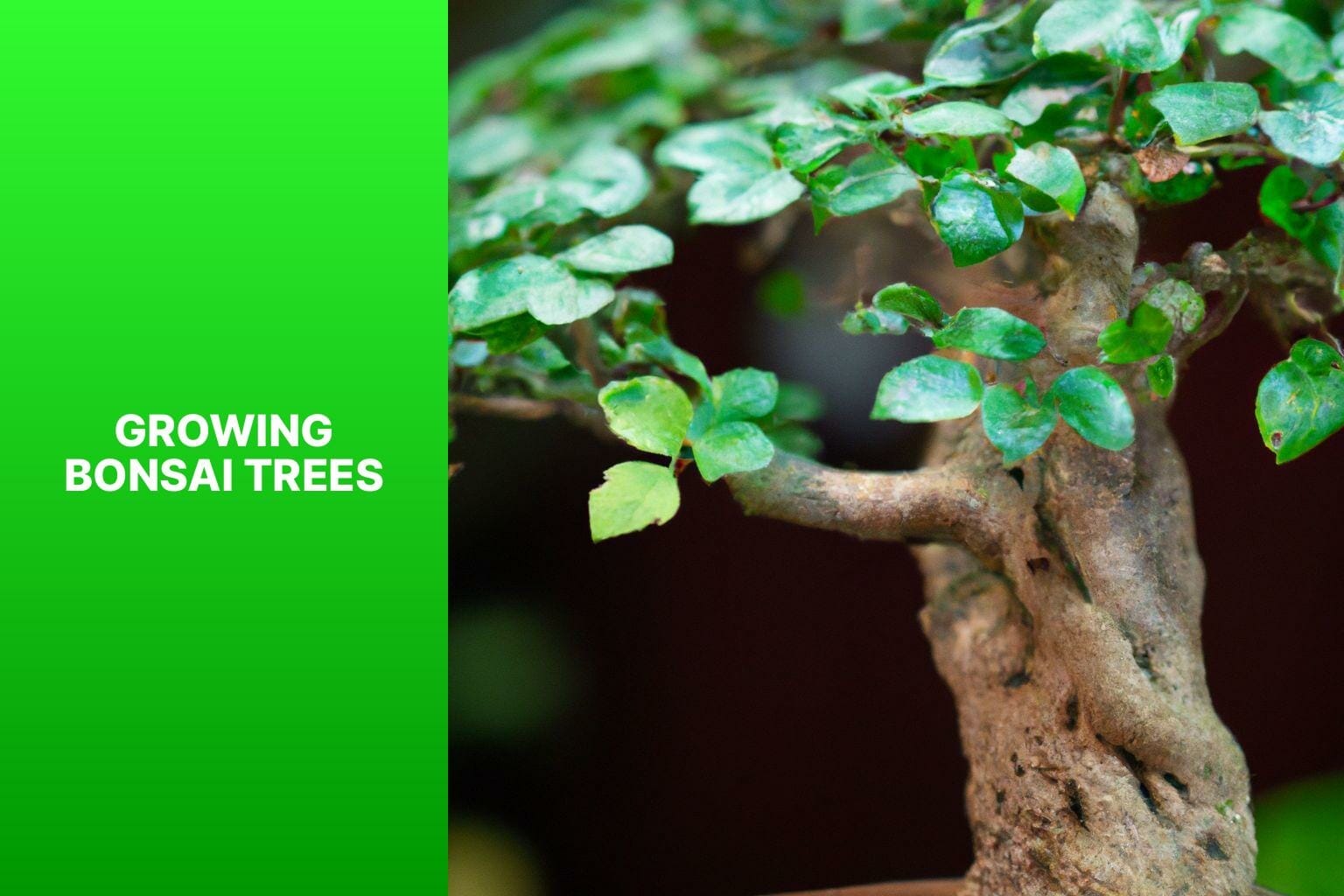
Photo Credits: Mnbonsainetwork.Com by Mason Green
Discover the art of growing bonsai trees and unlock the secrets to cultivating these miniature marvels. Delve into the world of understanding bonsai tree care, where we’ll explore the essential components needed for successful growth. From special techniques to nurturing practices, we’ll uncover the fascinating journey of nurturing bonsai trees into stunning masterpieces. So, prepare to embark on a horticultural adventure and learn to bring out the best in these enchanting living sculptures.
Understanding Bonsai Tree Care
Understanding Bonsai Tree Care is crucial for successful growth and maintenance. Here are important aspects to consider:
- Proper watering: Bonsai trees require precise watering. Water them when the soil feels slightly dry to the touch. Overwatering can cause root rot while underwatering can result in dehydration.
- Sunlight exposure: Bonsai trees need adequate sunlight. Most species prefer a balance of sun and shade. Place your bonsai tree where it can receive the right amount of sunlight.
- Pruning and Shaping: Regular pruning and Shaping maintain size and form. Trimming excess branches stimulates new growth and enhances aesthetic appeal.
- Fertilizing: Providing proper nutrients is essential for health and growth. Use a balanced, slow-release fertilizer formulated for bonsai trees. Follow recommended instructions.
- Soil and repotting: Bonsai trees require well-draining soil—report periodically to refresh the soil and promote healthy root growth. Repotting frequency depends on the species and age of the tree.
By understanding bonsai tree care requirements, enthusiasts can cultivate healthy and beautiful specimens. Remember, caring for bonsai trees is a continuous learning process. Each tree is unique and may require slight adjustments to care techniques. Keep observing your bonsai tree’s needs and adapt accordingly for optimal growth and longevity.
Essential Components for Growing Bonsai Trees
Essential Components for Growing Bonsai Trees
When growing bonsai trees, it is important to consider several essential components:
1. Pot: Choose a proportionate pot that allows proper drainage and complements the tree’s aesthetic.
2. Soil: Bonsai trees require well-draining soil to avoid waterlogging and root rot. A mix of akadama, pumice, and lava rock is commonly used for bonsai soil as it provides good drainage and moisture retention.
3. Watering: Proper watering is crucial for the tree’s health. Thoroughly water the tree, ensuring the water reaches the entire root system. Avoid excessive or insufficient watering as it can harm the tree.
4. Light: Bonsai trees need sufficient sunlight for growth and photosynthesis. Place the tree where it can receive the appropriate sunlight based on its species and natural habitat.
5. Fertilizer: Provide the necessary nutrients to support the growth and vitality of your bonsai tree. Use a balanced fertilizer specifically made for bonsai trees.
6. Pruning: Regular pruning helps maintain your bonsai tree’s desired shape and size. Trim branches and foliage carefully to promote balanced growth and enhance overall aesthetics.
By focusing on these essential components, you can ensure your bonsai tree’s healthy growth and development.
Watering and Pruning Techniques
Discover the secrets of maintaining healthy and thriving bonsai trees as we delve into the art of watering and pruning techniques. Learn how to water your bonsai tree properly to promote optimal growth and resilience. We will also explore the intricacies of pruning and shaping these miniature wonders, unlocking the techniques that create stunning and unique forms. Prepare to embark on a journey of nurturing and sculpting your botanical masterpiece.
Proper Watering Techniques for Bonsai Trees
Proper Watering Techniques for Bonsai Trees are crucial for the health and growth of these extraordinary plants. By using the right watering techniques, you can ensure that the moisture level of your bonsai tree is ideal. Watering your bonsai tree when the top layer of soil is slightly dry is important. To check the moisture level, stick your finger about an inch deep into the soil.
Overwatering should be avoided as it can lead to root rot. It’s essential to moisturize the root ball, but be careful not to waterlog the tree. The best way to water your bonsai tree is by thoroughly watering it until the water drains from the bottom holes of the pot, reaching all the roots.
The watering frequency will vary depending on the tree type, the pot size, and the climate. Monitoring the soil moisture to determine the exact watering schedule is important. Take into consideration the season and weather conditions. During hot and dry periods, you may need to water your bonsai tree more often, while during colder months, less watering may be required.
Regarding the water, it’s best to use room-temperature tap water or rainwater. Avoid softened or distilled water as they lack essential minerals the bonsai tree needs. Use a watering can with a fine nozzle or mister to ensure even and gentle water distribution. Strong water streams should be avoided as they can dislodge the soil or damage the branches.
After watering your bonsai tree, it’s important to observe it. If there are persistent puddles, adjusting the amount of water to prevent waterlogging may be necessary. Remember that different bonsai tree species have varying watering needs, so it’s crucial to research and understand the specific requirements of your tree.
Pruning and Shaping Bonsai Trees
Pruning and shaping bonsai trees involves several crucial steps. First, assess the shape and structure of the tree, carefully observing the branches and determining the desired form. Next, identify areas of excessive growth or disproportion and prune them to create balance and harmony. Use clean bonsai shears to carefully trim any excess growth, focusing specifically on branches or shoots that disrupt the desired shape.
It is crucial to prune the bonsai trees during their dormant phase, typically in late winter or early spring. This timing promotes healing and helps minimize any stress the tree may experience. Remember to balance foliage removal and tree health during this process. Avoid excessive pruning, as it can weaken the Bonsai overall.
In addition to pruning, wiring techniques can further shape the tree. Gently wrapping copper or aluminum wire around branches can guide their growth. Be cautious not to use excessive tightness, as it can damage the delicate bark.
Regularly inspect and monitor the bonsai tree’s response to pruning and shaping techniques. This allows you to make necessary adjustments and prioritize the tree’s health and well-being.
Following these steps, you can effectively prune and shape your bonsai tree, resulting in the desired form and aesthetic appeal. Remember, always prioritize the health and well-being of the tree.
Repotting and Fertilizing Bonsai Trees
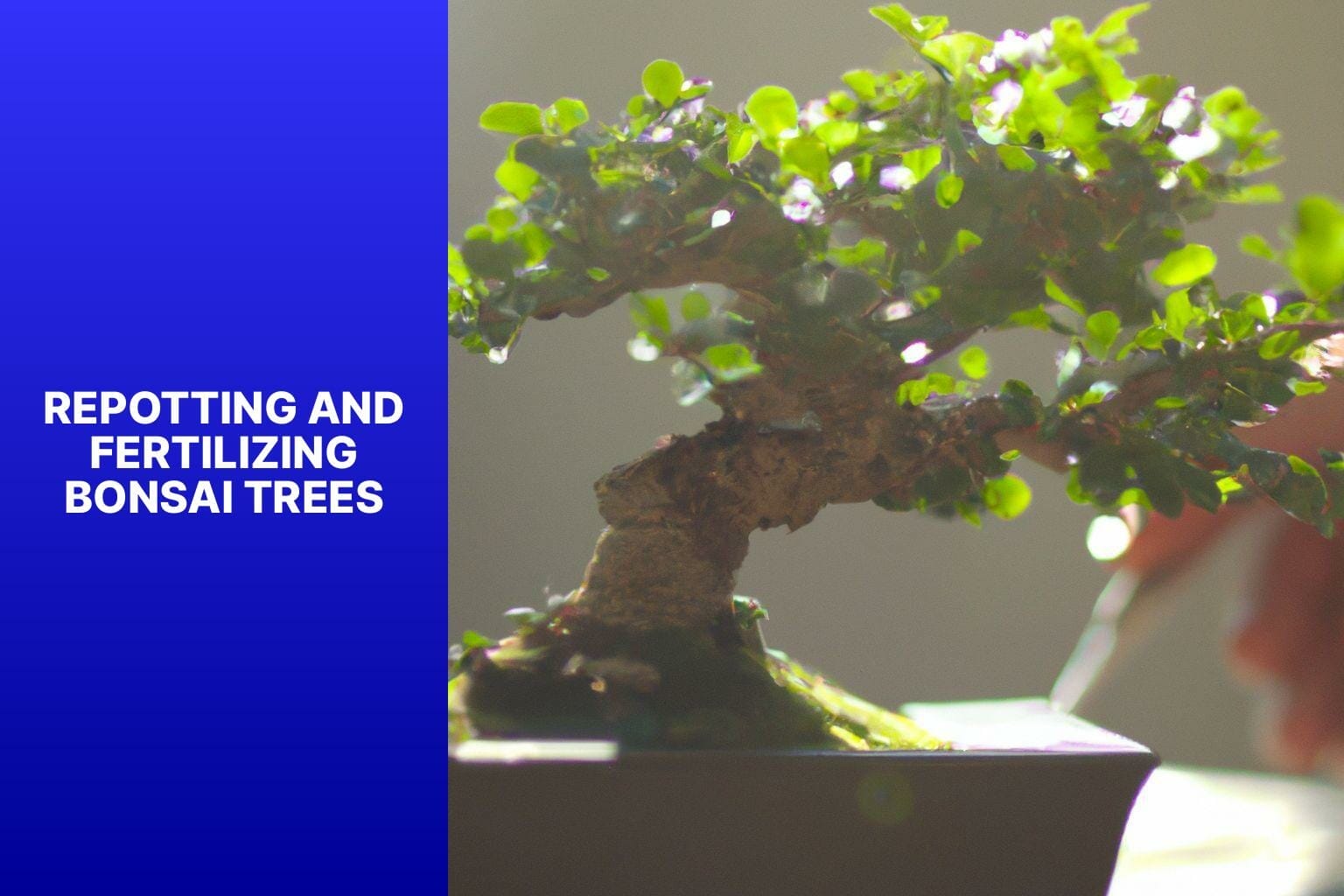
Photo Credits: Mnbonsainetwork.Com by Brandon Williams
Discover the secrets to thriving your bonsai trees with repotting and fertilizing techniques. Learn when and how to repot a bonsai tree for optimal root health, and uncover valuable tips for fertilizing to ensure your bonsai trees stay strong and vibrant. With these essential practices, you can nurture your bonsai trees to their full potential and create a magnificent living art form.
When and How to Repot a Bonsai Tree
To repot a bonsai tree, you should do so during its dormant period, typically in late winter or early spring. First, gather the necessary materials, including a pot with drainage holes, fresh bonsai soil, pruning shears, and a root rake. To begin repotting, gently tap the sides of the current pot to loosen the soil and carefully lift the tree out. Inspect the root system for rot, disease, or overgrowth signs during this process.
Using pruning shears, trim and prune excessively long or tangled roots. Remove any black, mushy, or dead roots while trimming healthy roots to encourage branching. After preparing the new pot with fresh bonsai soil, position the tree in the center and gently spread out the roots, ensuring the tree is upright and stable. Fill the pot with bonsai soil and evenly distribute it between the roots, settling the soil by gently tapping it.
Once the repotting is complete, thoroughly water the bonsai tree to settle the soil and hydrate the roots. For the next few weeks, place the tree in a shaded area with indirect sunlight, allowing it time to recover. Following these steps, you can effectively repot your bonsai tree, promoting its overall health and vitality. Remember to repot your bonsai tree every 1-2 years to ensure proper root development and growth.
Fertilizing Tips for Healthy Bonsai Trees
Use a balanced fertilizer: When fertilizing bonsai trees, use a balanced fertilizer with equal amounts of nitrogen (N), phosphorus (P), and potassium (K) for all necessary nutrients.
Follow the instructions: Read and follow the fertilizer package instructions carefully to avoid burning roots or damaging the tree by applying too much or too little fertilizer.
Fertilize during the growing season: Fertilize bonsai trees from spring to early autumn, when new growth occurs and additional nutrients are needed.
Apply fertilizer evenly: Spread fertilizer evenly over the soil surface, avoiding contact with the trunk or leaves to ensure even distribution to the roots.
Avoid fertilizing newly repotted trees: Wait 4-6 weeks after repotting before fertilizing to allow the roots to recover and reduce the risk of root burn.
Use organic fertilizers: Choose organic fertilizers like fish emulsion or compost, as they release nutrients slowly and improve soil structure and microbial activity.
Adjust fertilizer dosage based on tree health: Increase frequency or dosage if the bonsai tree shows weak growth or nutrient deficiency, and reduce them if healthy and vigorous.
Remember, fertilizing is just one part of bonsai care. Proper watering, pruning, and repotting techniques are equally important for the tree’s overall health and vitality—Fertilizing Tips for Healthy Bonsai Trees.
Common Bonsai Tree Problems and Solutions
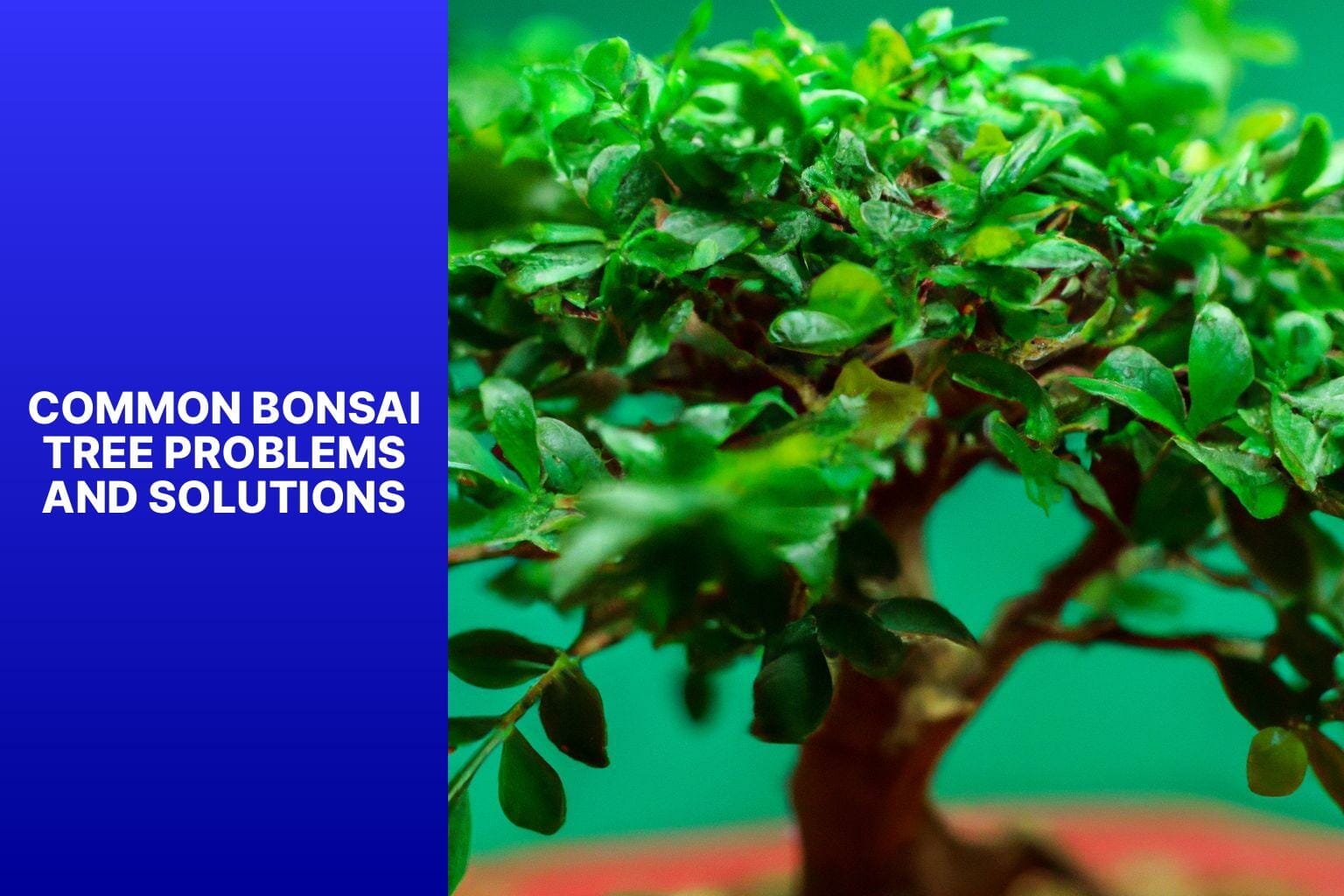
Photo Credits: Mnbonsainetwork.Com by Wayne Walker
Are pesky pests and diseases ruining your bonsai tree’s growth? Are they concerned about root rot and overwatering? This section investigates common problems that bonsai tree enthusiasts face and finds effective solutions. Get ready to learn how to fend off pests, conquer diseases, and ensure your Bonsai roots stay healthy and balanced. Say goodbye to troubles and hello to a thriving, vibrant bonsai tree!
Dealing with Pests and Diseases
Regularly inspect your bonsai tree for pests or diseases, such as holes in leaves, discoloration, or webbing. If aphids, scale insects, or spider mites are present, apply organic insecticidal soap or neem oil to eliminate them. Remove and destroy leaves affected by fungal diseases like powdery mildew or leaf spot, and use a fungicide to prevent further spread. Maintain good bonsai tree hygiene to prevent pests and diseases. This includes removing fallen leaves, pruning dead branches, and regularly cleaning the pot and surrounding area.
Fact: Did you know that ladybugs and lacewings can help control pests in your bonsai tree? Encouraging a diverse ecosystem in your garden is an effective natural pest control method.
Addressing Root Rot and Overwatering
Root rot and overwatering can harm your bonsai tree. Promptly address these issues to ensure the tree’s survival. Follow these steps:
1. Assess symptoms: Look for yellowing leaves, wilting foliage, and a foul odor from the soil. These indicate root rot and overwatering.
2. Remove the tree from the pot: Take the bonsai tree out of its pot and examine the roots. Healthy roots should be firm, white, and evenly distributed.
3. Trim affected roots: Use sterilized pruning shears to remove brown or mushy roots. Be careful not to cut too much healthy root tissue.
4. Improve drainage: Check for drainage holes in the pot. If there are none, repot the tree in a pot with holes. Ensure the soil mixture has good drainage.
5. Adjust watering schedule: Overwatering often causes root rot. Allow the soil to dry out between watering sessions slightly. Use the “finger test” – stick your finger about an inch into the soil, and if it feels dry, water the tree.
6. Use a fungicide: If root rot persists, apply a Bonsai tree-specific fungicide following the product label’s instructions.
7. Monitor the tree’s progress: Closely for further signs of root rot or overwatering. Adjust the watering schedule or seek professional advice if needed.
Following these steps can effectively address root rot and overwatering in your bonsai tree, promoting its health and longevity. Act promptly to prevent further root damage and maintain your bonsai tree’s well-being.
Bonsai Tree Display and Styling
When displaying and styling bonsai trees, your choices can bring these miniatures to life. From selecting the perfect bonsai pot to mastering the art of presentation, this section will unleash your creativity and help you discover the secrets of showcasing bonsai trees like never before. Get ready to dive into bonsai aesthetics and learn valuable tips for displaying and styling these miniature wonders. Let your bonsai tree shine in all its glory!
Choosing the Right Bonsai Pot
When selecting a bonsai pot, consider the following factors for the health and appearance of your bonsai tree:
– Size: Pick a pot proportionate to your tree’s size. It should allow room for root growth and proper drainage.
– Material: Consider the pot’s material, which affects moisture retention. Clay pots have better drainage, while plastic pots retain moisture.
– Style: Choose a pot that complements your tree’s style and shape. Traditional bonsai pots are shallow, while contemporary pots have various designs.
– Color: Take the pot color into account, as it impacts the visual presentation of your tree. Please choose a color that enhances its natural beauty and foliage color.
Remember, the right bonsai pot enhances aesthetics and influences the tree’s health and growth. Size and material affect water retention and root airflow. Therefore, choose the pot thoughtfully for long-term success.
Bonsai has a rich history, originating in China and later spreading to Japan. It involves training miniature trees in containers to mimic full-sized trees in nature. The pot choice plays a significant role in creating the illusion of a mature tree in a small space. Bonsai has become an art form symbolizing patience, discipline, and harmony with nature.
Tips for Displaying and Styling Bonsai Trees
When displaying and styling bonsai trees, consider the following tips:
– Choose the right bonsai pot: Select a pot that complements the tree’s style and size. The pot should be proportionate to the tree’s height and width. Consider the pot’s color, shape, and material to create a harmonious and pleasing display.
– Consider the placement: Bonsai trees thrive in well-lit areas with good airflow. Place your tree near a window or in a location with ample sunlight. Avoid direct exposure to harsh sunlight that may damage the tree. Also, avoid placing the tree in drafty areas or near extreme temperature conditions.
– Showcase the tree’s unique features: Each bonsai tree has distinctive characteristics, such as trunk shape, branch arrangement, and foliage texture. Position the tree in a way that highlights these unique features and creates visual interest.
– Use appropriate accents: Enhance the overall display of your bonsai tree by adding accents like rocks, moss, or miniature figurines. These accents should complement the style and theme of the bonsai tree, adding depth and visual appeal to the composition.
– Maintain regular care: Regular care and maintenance are crucial for the health and beauty of bonsai trees. Prune and shape the tree regularly to maintain its desired form. Water the tree appropriately, ensuring the soil is neither too dry nor too saturated. Fertilize the tree at the appropriate times for optimal growth.
By following these tips, you can create a visually stunning display and elevate the aesthetics of your bonsai tree.
Some Facts About How To Grow Bonsai Trees:
- ✅ Bonsai is an art form that originated in China during the Han Dynasty. (Source: Almanac)
- ✅ There are three main techniques involved in growing Bonsai trees: cultivation, styling, and care. (Source: Bonsai Empire)
- ✅ Bonsai can be created using various methods, including buying a ready-made tree, collecting trees from your surroundings, or cultivating your tree from seeds or cuttings. (Source: Bonsai Empire)
- ✅ Shaping and styling the Bonsai tree involves pruning, a crucial technique used to shape the tree and keep it miniature. (Source: Bonsai Empire)
- ✅ Proper care and maintenance, including watering, repotting, and fertilizing, are crucial for the health and success of a Bonsai tree. (Source: Almanac)
